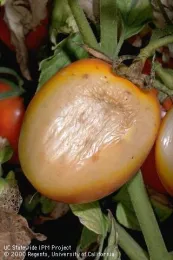
While most of our garden plants need at least 6 hours of full sun to be productive, too much sun, especially when combined with too much heat, can be too much for plants to bear. Problems arise especially when temperatures are over 85 to 90 degrees F.
Tomatoes and peppers will be the first to show signs of excessive light exposure and heat stress. Symptoms include the production of smaller-than-average leaves and rolled or curled leaves (often mistakenly blamed on herbicide exposure). Then, later during the production season, there may be poor fruit-set (often mistakenly blamed on lack of pollinators in enclosed space production), sunburn, white or hard core, and yellow shoulder. Some shade and lowering the temperature can fix these things.
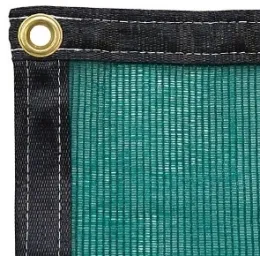
Hundreds of years ago, farmers used simple woven fabrics like burlap or other natural materials to keep crops protected from extreme sun rays. Now, we use more sophisticated knot-knit polypropylene and aluminum shade cloths, but the benefits remain the same.
Benefits of Garden Shade Cloth
Garden shade cloth does three critical things for your summer garden:
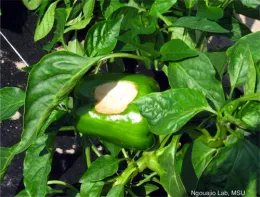
- It reduces the intensity of the sunlight that hits your crops, which can be beneficial during extreme heat and for heat-sensitive plants. It's important to note that garden shade cloth does not reduce the hours of sunlight your crops receive, just the intensity of that sunlight. As the sun's intensity is diminished, you will notice reduced wilting and sunscald in your crops. Commercial pepper growers depend on shade cloth to prevent dreaded sunscald.
- It reduces the amount of transpiration that comes from the leaves of the plants. When your plant is not losing excess moisture between waterings, it will grow more abundantly.
- It also reduces the evaporation of water from your soil and keeps it cooler. This is critical when growing sensitive crops, transplanting seedlings, or trying to extend your growing season.
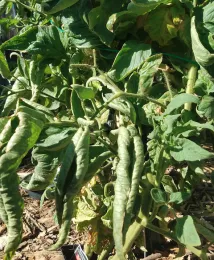
Curled leaves on a tomato plant. Photo by Belinda Messenger-Sikes, UC IPM.
Learn about the research behind using shade cloth by visiting this University of Delaware UC Cooperative Extension web page (https://sites.udel.edu/weeklycropupdate/?p=20476)
How you use and install the shade cloth will depend entirely on your method of gardening. Are you growing directly in the ground, in raised beds, or containers? In essence, the cloth needs to provide shade during the hottest part of the day, likely afternoons. It does not have to go all the way to the ground as long as the plants are mostly shaded. Its height is dependent on the height of your plants. I have some tomatoes that are over 6 feet tall, so my shade cloth tops 8 feet to be safe. It should also be secured well enough to withstand occasional summer winds in the 10 to 15 mph range.
Color is also up to you as it comes in white, black, brown and green. Black tends to be most commonly used with a rating at about 40% density. Any higher than that is not necessary for home garden applications.
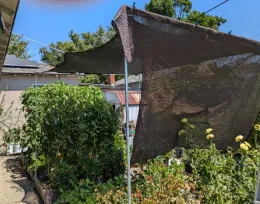
Happy Gardening and may your tomatoes and peppers be more productive this season.
If you have additional questions or need more help, don't hesitate to reach out to your local UC Master Gardener Program. We have a team of volunteers trained and eager to help you have a bountiful harvest!
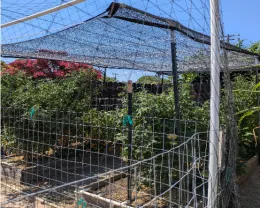
If you live in Stanislaus County, use this easy, online survey tool http://ucanr.edu/ask/ucmgstanislaus
Tim Long has been a UC Cooperative Extension Master Gardener in Stanislaus County since 2020.


